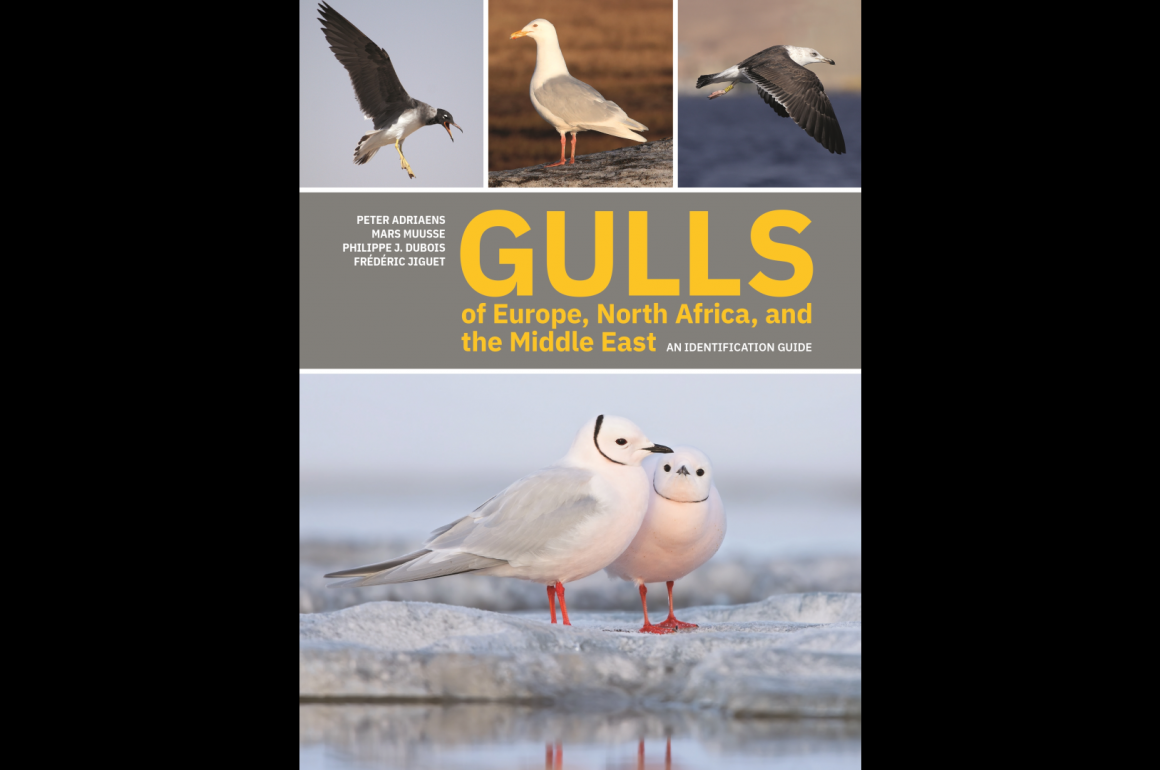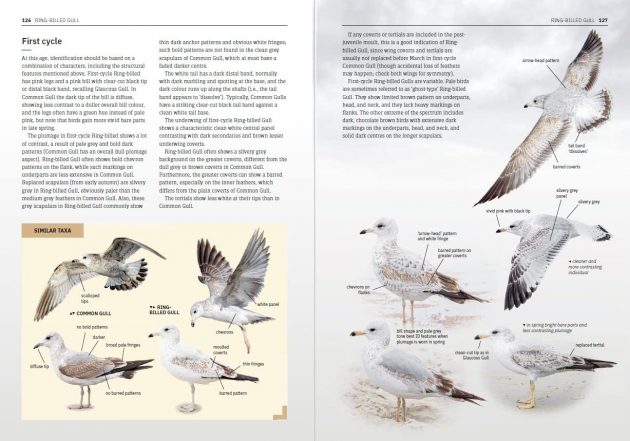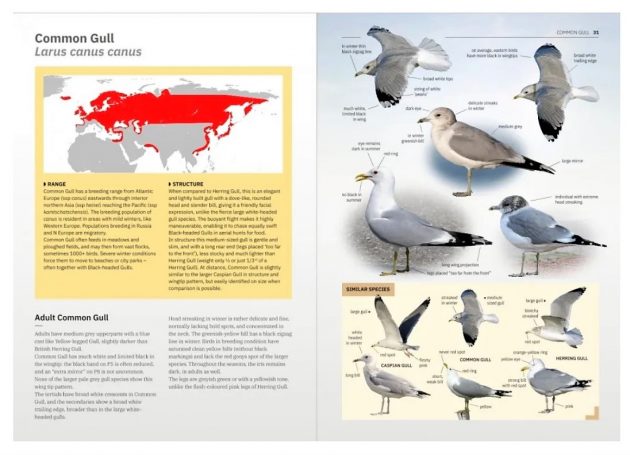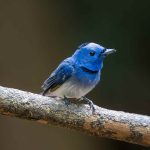
I see myself as an old school birder, which means that I do remember the times when good bird photos were rare and far in between, and the times when bird paintings were getting ever more impressive. Yes, I do prefer paintings, among other reasons, for the sheer aesthetic pleasure of enjoying a particular artist’s style. Yet, there is one group of birds where even I prefer photographs: gulls.
In field guides I’ve seen many beautiful gull paintings, where I couldn’t help asking myself: however alluring they may be, is the JIZZ just right? Or slightly off? And even the best and the most respected painters are not spared of such scrutiny. On the other hand, I do not feel confident in my knowledge of gulls to give a definite answer.
That is why I am so pleased to see the new “Gulls of Europe, North Africa, and the Middle East: An Identification Guide” being illustrated with nearly 1400 colour photographs of the 45 species of gulls found in the Western Palearctic. On my last trip to Greece, I carried and studied this book, hoping for the Audouin’s Gull (no such luck yet, actually I saw very few gulls).

My first impression is that the book is somewhat large and heavy (2.05 pounds, and 6.7 x 0.9 x 9.4 inches), not the user-friendly type to carry around. True, the book is called an identification guide and not a field guide, though in my mind those are synonyms. While you can keep it in your car, it is my impression that it was more meant to be used at your desk. This size remark does not apply to this guide only, it is my impression that bird books in general are getting larger and heavier and that publishers these days rarely take user-friendliness into consideration.
But, as you all know, nothing someone says before the word ‘but’ really counts. “Gulls of Europe, North Africa, and the Middle East” compares similar taxa and addresses the complexities of identifying hybrids (something I will never master, with this book or without it). Sections explore gull watching, migration, aberrant birds, sonograms, and population dynamics.
Individual species accounts range from 4 to 8 pages and deal with structure (JIZZ), adult plumage, for smaller species the first cycle immature plumage, and for larger species the second and third cycle of plumage as well, followed by illustrated similar taxa for each cycle. Detailed range maps with a textual range description for each species are included.

From my experience, the gulling season is definitively winter. The colder – the better. Yuck. I hate the cold. And I spent long hours counting their afternoon flyovers towards roosting sites, up to 40,000 birds in a day. Let’s recount it all again: temperatures around zero, wind and teary eyes, long hours watching large numbers of identical-looking birds enveloped in the stench of a rubbish dump and even enjoyed it? Well, yes.
But I went off-topic. ‘Definitively winter’ stands for bleak skies, short days, no sunshine, and barely enough light for gull photography. You can clearly see that some photos were shot on overcast days, but the majority were shot in fairly good light, they are clear, sharp, and the colours seem well balanced and realistic. And most of the time you will be focused on photos, reading the descriptions only when not certain and when the photos do not seem to be sufficient (although we should read the text ahead of gulling, only the best gullers do so, while we, mere mortals, are trying to cut the curves).
The authors are among the foremost experts on this taxing group. Peter Adriaens is an ecologist who has traveled widely to study and photograph gulls. Mars Muusse is a Dutch birder specializing in gulls and the founder of a famous gull identification website Gull Research Organization. Philippe J. Dubois is an ecologist, author, and editorial director of the journal Ornithos. Frédéric Jiguet is a conservation biologist at the National Museum of Natural History in Paris.
Together, they produced a stunning gulling guide with many great to some adequate photos (and even I say hurray to photos), authoritative texts and easy to navigate maps. Highly recommended.
Gulls of Europe, North Africa, and the Middle East: An Identification Guide
By Peter Adriaens, Mars Muusse, Philippe J. Dubois, and Frédéric Jiguet
Publisher: Princeton University Press (April 5, 2022)
Paperback: 320 pages
ISBN-10: 0691222835
ISBN-13: 978-0691222837













Totally agree, this is an excellent identification guide. One thing North American birders might find of interest is that the authors decided to list Thayer’s Gull as a full species, disagreeing with the NAAC ‘demotion’ of the species to a subspecies of Iceland Gull: “…we have not seen any strong evidence that these two taxa (nominate glaucoides and thayeri) behave like subspecies; large-scale interbreeding has not been demonstrated….On the other hand, field studies have indicated clear morphological differences betwee all three taxa…as well as vocal differences…..None of these references were mentioned in the NACC proposal” (p. 6). Sounds like a challenge to me!